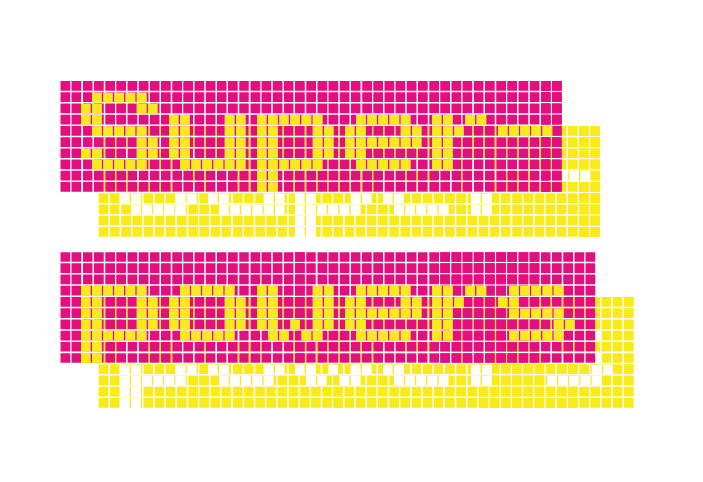Childcare robots, Botox-reading AI and algae textiles: What is Manifestations Festival bringing to Dutch Design Week?
What superpower would you choose? What designs can improve our daily life? Manifestations, a friend of Unbore, will be presenting a new exhibition called ‘Superpowers’ at the Dutch Design Week in Eindhoven, The Netherlands, this month. The exhibition will showcase emerging artists and designers that research, play and offer innovative solutions to imagine a better world. The organisation highlights the way technological innovation impacts us, and our societies. Take a look at some of the curious inventions that will be on show at the Dutch Design Week (19-27 October).
Speculative home devices to protect your data
Do you want to stop your devices spying on you? Two designers have created speculative add-on products for people that are paranoid about their data security. The internet of things has introduced new objects to our homes that depend on collecting our data. These new prototypes by Pia-Marie Stute and Katja Trinkwalder are wittily called Accessories for the Paranoid, and demonstrate a common desire to protect our privacy. The two designers created an “unhacking” webcam which you put on your laptop or phone to display scenes in case hackers gain access to the camera. Another device plays noise to Amazon’s Alexa, so that it can’t take any real information.
Pia-Marie Stute and Katja Trinkwalder - Accessories for the Paranoid
AI technology that reads Botox facial expressions
Your face is the way you express yourself, and it’s an important part of your identity. Not only does design researcher Marsha Wichers look into how Botox injections change how you look, she also addresses how it minimizes your ability to make expressions in Project Face Design. Did you know that, in 2018 almost 18 million people had cosmetic procedures in the United States. With the growing trend for facial Botox, Marsha wanted to create a way to identify emotions using AI software (in collaboration with Noldus Information Technology). Using her own face to experiment, the technology identifies facial expressions before and after injections.
Project Face Design by Marsha Wichers © Marsha Wichers
Sustainable algae textile that breathes in oxygen
Looking for alternatives to the polluting fashion industry? Sensoree has designed wearable garments that are made with an algae-based sustainable textile that’s enhanced with chlorophyll. Sensors monitor how your body’s feeling, and then translate that in real time to visual, audio or tactile displays on the oxygen-breathing garment.
BioFLeXo by Sensoree
Can robots look after babies?
Robotika is a childcare robot by artist Joaquin Fargas, previously exhibited at Ars Electronica. The Nannybot uses AI to take care of babies. But it begs the question - Can robots ‘care’? Would you delegate the preservation of the human species to AI? Can you imagine having a robot nanny in the future?
Robotika, The Nannybot by Joaquin Fargas . Design and realisation Elia Gasparolo
Experience news events with virtual reality
Instead of reading a news report, how about experiencing it? This speculative design project imagines Immersive Journalism with a virtual reality installation. The project is by Jim Brady (Post Neon) & Ward Goes (Studio Ward Goes). The theatrical character of these experiences change the way we see world affairs, and might even change how empathetic we are with the events. Could this be the future of the news industry?
Immersive Journalism by Jim Brady (Post Neon) & Ward Goes (Studio Ward Goes)
Robots of deceased loved ones in your home
The Digital Shaman Project by Etsuku Ichihara was designed as a new form of funeral. The idea is that robots wear 3D printed faces of your deceased loved ones, with specially developed programs to imitate people’s speech and physical mannerisms. Inspired by the Buddhist faith, the robot would spend 49 days with the family because that’s how long the spirit needs to enter a new life. This speculative design addresses the real but morbid events of mortality. It creates a new religiosity of mourning in our ever-digital future of science and technology.
Digital Shaman Project by Etsuku Ichihara
Would you like these objects in your home? Come along to the Manifestations Festival, a part of Dutch Design Week to see these artworks, and many more from 19-27 October. The design week is a definite must-see for anyone curious about science, technology and the future of humanity.



